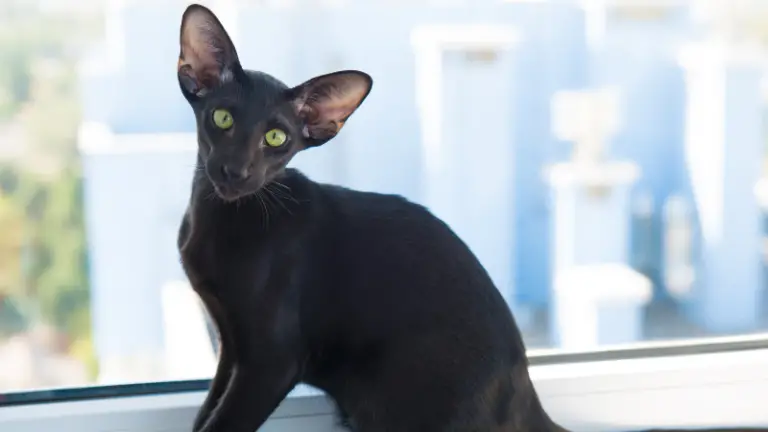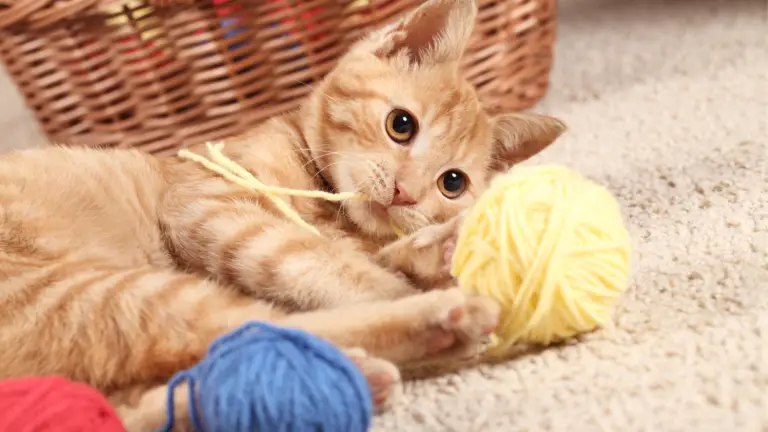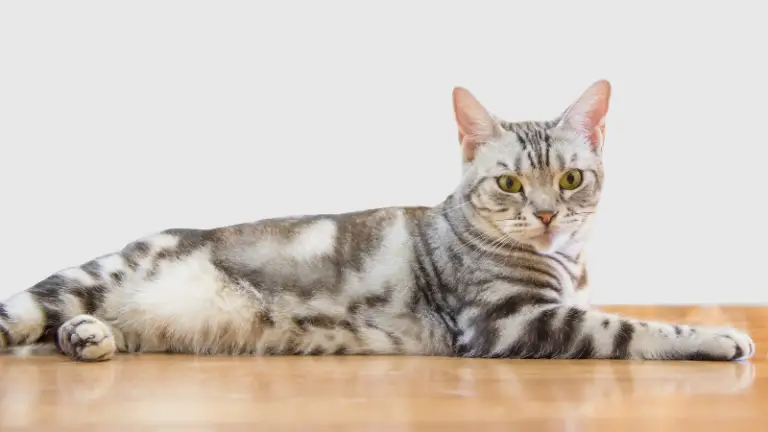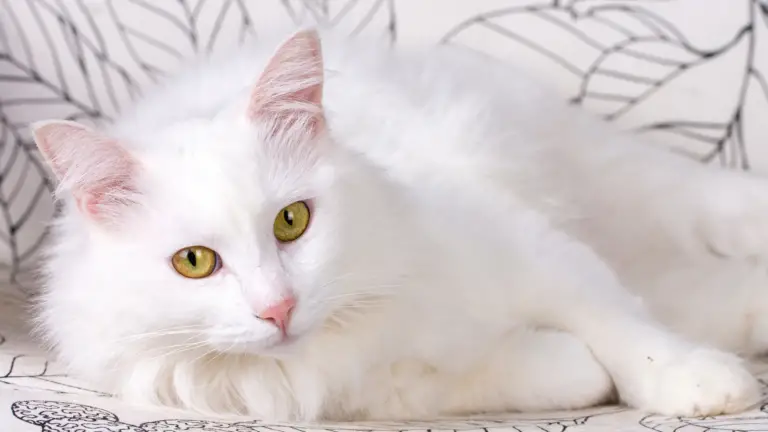SOMALI CAT PERSONALITY AND BREED (ALL YOU NEED TO KNOW)
Are you curious to know about the Somali cat personality? This breed has been discussed for many years.
With reluctance, breeders of Abyssinians cats had to admit that specimens were sometimes born with long fur in the litter. But now the Somali is widely accepted and has indeed become a pretty popular cat.
At a glance, the Somali cat is an intelligent and responsive breed. Those cats look like long-haired Abyssinians and ticked tabbies but can reproduce in different colors.
Let’s know more about the Somali cat personality and breed.

WHAT IS THE SOMALI CAT GENERAL ASPECT AND SIZE?
The colors of the Somali cat are really stunning.
The characteristic appearance of the Somali is due to the ticking on the individual hairs and the greater length of the coat, which allows a higher number of color bands compared to the Abyssinian.
They will be present for a minimum of six up to a maximum of fourteen alternating bands of base and secondary color. Various parts of the body, such as the tip of the tail, have the coloring corresponding to ticking.
This characteristic begins developing from three months onwards.
On the chin, the whiskers bearings are dark, contrasting with the white fur area
on the chin. On the forehead, it is evident a brand M-shaped coloration.
| Characteristic | Description | Notes |
|---|---|---|
| Synthesis | Long-haired version of the Abyssinian | |
| Personality | Sociable, intelligent, and lively by nature, he is an excellent companion | |
| Appearance | Variety ticked tabby, without the streaks on paws and on the collar | The tabby spots have been removed from selection programs over generations |
| In the house | He loves to explore, but he also proves to be a loving cat | The coat tends to thin out a lot for a short period |
| Behavior | Quiet in nature, but agile, it can turn out to be a skilled hunter | |
| Grooming | In spring it is an operation to be repeated often because it loses its winter coat | |
| Most common Health Problems | Often suffer from dental problems, and metabolic dysfunction due to enzyme pyruvate kinase (PKDef) | Cats carrying this gene (PKDEf) can be identified with a DNA test |
| Size | Medium size; 6 kg for the male, 4 kg for the female | |
| Ears | Large, set low, and folded slightly forward | |
| Eyes | Large, oblique, and expressive | |
| Head | Wide, proportionate, with a slight stop of the elongated nose and muzzle | |
| Paws | Slender and with light bone; feet are small and oval in shape | |
| Coat | Of medium length, soft, fine, and longer long on the tail, belly, ruff, and thighs | |
| Admitted Colors | hare or ruddy, chocolate, lilac, cinnamon, fawn, silver shaded, and chinchilla. |
The sorrel is a version with lighter colors, while the blue has gray-yellowish lower parts. Until today, in total, twenty-eight varieties of this breed have been created. The coloring and the dark tip of the tail indicate that it’s ruddy.
▷ The Bushy tail made him get the nickname “cat-fox.”
Curious and intelligent, the Somali cat is never a boring company.
WHAT IS THE HISTORY OF THE SOMALI CAT?
Nobody knows for sure when the longhair gene entered the Abyssinian lineage, but it may be the result of a crossing with the Balinese in the 1920s. As for the Abyssinian, the traditional color of Somali is ruddy.
The Somali is a long-haired version of the Abyssinian cat, but he stands out from his cousin for his more intense color and the wildest shades.
Contrary to what one might think, the name of this breed does not derive at all from the country of origin.
The Somali, in fact, was born in the United States probably at the turn of the nineteenth and twentieth century by some breeders who attempted a cross between Abyssinian cats and some long-haired specimens.
The experience did not give the desired results, and the kittens, who all had short-haired coats, were abandoned.
The beginning of the two world wars reduced further the number of Somalis, like
it happened for so many other races, and in the first postwar, it was decided that to restore the breed, it was ok also to use specimens without pedigree in the selection.
With probability among these cats, there was some descendant of that experimental litter described above and endowed with that recessive gene responsible for long hair. In this way, it was born a new breed of cats.
Initially, they did not collect great success and had to wait until 1960 for the breeders to begin to select them and make it possible to have many more Solali cats. Somali, so named in 1982 due to its close relationship with the Abyssinian, was recognized in 1978 and today is widespread worldwide.
SOMALI CAT PERSONALITY
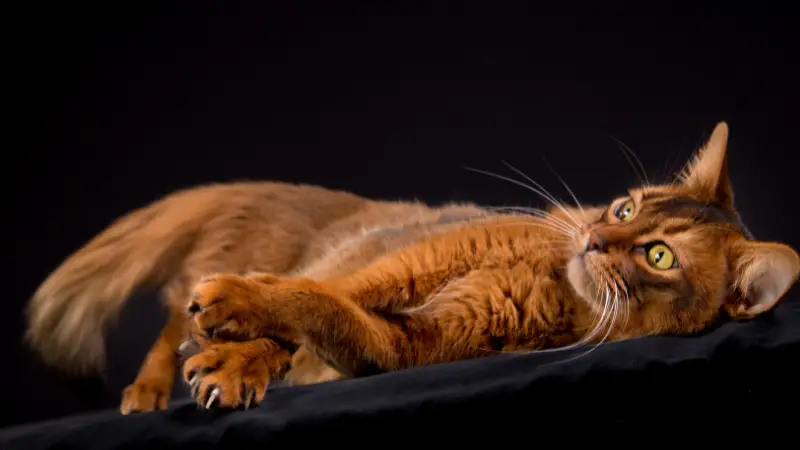
The Somali cat has many characteristic affinities with the Abyssinian. He’s highly sociable and loves being in the company of his owners, but also of other cats or even dogs.
Certainly, among his many qualities, you can not forget the marked intelligence of the cat and insatiable curiosity.
The Somalis are extremely lively; they like to jump, play to the end and climb the most inaccessible peaks from which, however, he will always know how to get off. For this very reason, an apartment with a garden or terrace is the ideal home for a cat like him.
He is a skilled hunter who leaves no way out to his small prey. He is a rather talkative cat; his voice is soft and never insistent.
With the children, he proves himself docile and patient; he likes to bond deeply with one family member, but he can great leaps of affection also with the rest of the family.
If this cat has a defect, it is that he is very stubborn. In addition, the slightest movement of simple objects is just enough to entertain this cat.
Affectionate, intelligent, and highly active, the Somali loves to play and interact with humans. He can learn how to seek and retrieve small objects, a capacity that surprises and amuses even the most reluctant of human beings.
A DIFFICULT BEGINNING
The first specimens of this breed were probably born from the mating between two individuals; both endowed with recessive longhair genes, they were frowned upon by the breeding community.
It was believed that these cats were an anomaly that could compromise the purity of the Abyssinian breed, and certainly, none liked the designation of “Long-haired Abyssinian.”
The name “Somali” was coined by one of the first breeders of this breed, Mrs. Evelyn Mague, who wanted to underline the close proximity with the Abyssinian giving it the name of the country bordering Ethiopia, better known once as Abyssinia.
HOW TO CARE FOR AND FEED A SOMALI CAT
The Somali does not require specific care, thanks to the fact that it tends not to lose
a lot of hair. A brush or two during the moult, done weekly, is more than enough to keep a shiny and healthy coat.
However, the Somali cat is really greedy when it comes to food. For this reason, it is mandatory to check the doses to prevent him from gaining too much weight.
But a diet based on packaged, dry foods and wet are good as long as it is high quality. This is perfect to guarantee him the right amount of nutrition.
FREQUENTLY ASKED QUESTIONS
What is the price of a Somali cat?
Somali cats are pretty expensive; depending on the age and the breeder, you can expect a Somali cat to cost up to $1000-2000.
Is the Somali cat rare?
Somali cats are pretty rare. Although it is now a well-known breed, it is not yet easy to get. But doing proper research, it is possible to find breeders, but do not be surprised if you have to travel to get there.
Are Somali cats indoor cats?
Somali cats can be indoor cats, but remember, they are intelligent active cats. They love to play, so if you keep them only indoors, you have to play with them and keep them engaged. However, they will enjoy some time outside if you have a yard or a garden.
Do Somali cats make good pets?
Somali cats are good pets for those who want to interact with their cats, you can play with them, make them do tricks, and they will be very affectionate to you.
Do Somali cats shed a lot?
Somali cats do not shed much during the year, besides during the moulting period, when they lose the winter coat.


